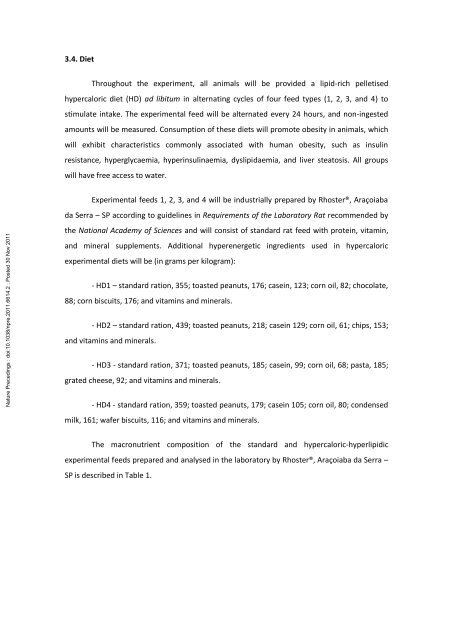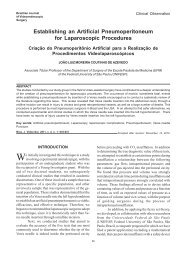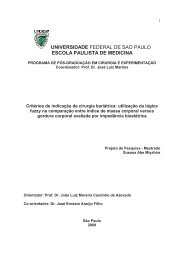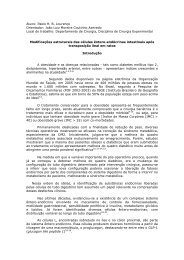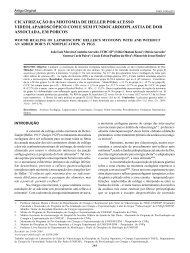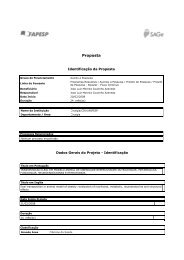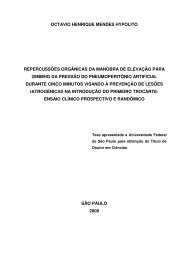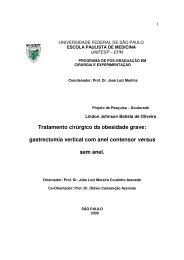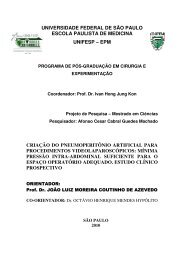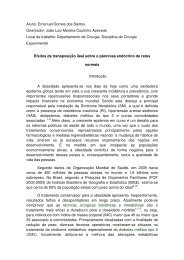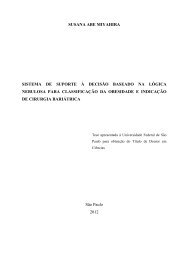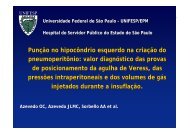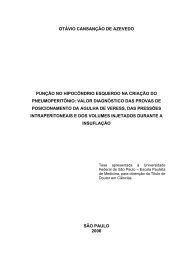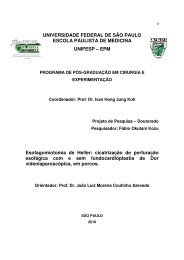Isolated ileal interposition in enteroendocrine L cells differentiation
Isolated ileal interposition in enteroendocrine L cells differentiation
Isolated ileal interposition in enteroendocrine L cells differentiation
You also want an ePaper? Increase the reach of your titles
YUMPU automatically turns print PDFs into web optimized ePapers that Google loves.
3.4. Diet<br />
Throughout the experiment, all animals will be provided a lipid-rich pelletised<br />
hypercaloric diet (HD) ad libitum <strong>in</strong> alternat<strong>in</strong>g cycles of four feed types (1, 2, 3, and 4) to<br />
stimulate <strong>in</strong>take. The experimental feed will be alternated every 24 hours, and non-<strong>in</strong>gested<br />
amounts will be measured. Consumption of these diets will promote obesity <strong>in</strong> animals, which<br />
will exhibit characteristics commonly associated with human obesity, such as <strong>in</strong>sul<strong>in</strong><br />
resistance, hyperglycaemia, hyper<strong>in</strong>sul<strong>in</strong>aemia, dyslipidaemia, and liver steatosis. All groups<br />
will have free access to water.<br />
Experimental feeds 1, 2, 3, and 4 will be <strong>in</strong>dustrially prepared by Rhoster®, Araçoiaba<br />
Nature Preced<strong>in</strong>gs : doi:10.1038/npre.2011.6614.2 : Posted 30 Nov 2011<br />
da Serra – SP accord<strong>in</strong>g to guidel<strong>in</strong>es <strong>in</strong> Requirements of the Laboratory Rat recommended by<br />
the National Academy of Sciences and will consist of standard rat feed with prote<strong>in</strong>, vitam<strong>in</strong>,<br />
and m<strong>in</strong>eral supplements. Additional hyperenergetic <strong>in</strong>gredients used <strong>in</strong> hypercaloric<br />
experimental diets will be (<strong>in</strong> grams per kilogram):<br />
- HD1 – standard ration, 355; toasted peanuts, 176; case<strong>in</strong>, 123; corn oil, 82; chocolate,<br />
88; corn biscuits, 176; and vitam<strong>in</strong>s and m<strong>in</strong>erals.<br />
- HD2 – standard ration, 439; toasted peanuts, 218; case<strong>in</strong> 129; corn oil, 61; chips, 153;<br />
and vitam<strong>in</strong>s and m<strong>in</strong>erals.<br />
- HD3 - standard ration, 371; toasted peanuts, 185; case<strong>in</strong>, 99; corn oil, 68; pasta, 185;<br />
grated cheese, 92; and vitam<strong>in</strong>s and m<strong>in</strong>erals.<br />
- HD4 - standard ration, 359; toasted peanuts, 179; case<strong>in</strong> 105; corn oil, 80; condensed<br />
milk, 161; wafer biscuits, 116; and vitam<strong>in</strong>s and m<strong>in</strong>erals.<br />
The macronutrient composition of the standard and hypercaloric-hyperlipidic<br />
experimental feeds prepared and analysed <strong>in</strong> the laboratory by Rhoster®, Araçoiaba da Serra –<br />
SP is described <strong>in</strong> Table 1.


